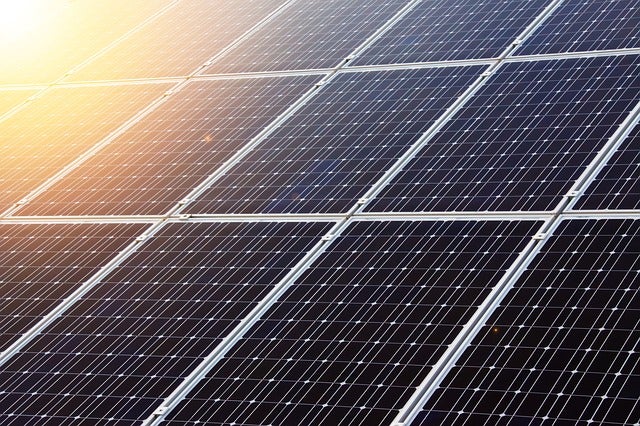Earlier this week the U.S. Environmental Protection Agency and the U.S. Department of Transportation announced new greenhouse gas emissions and fuel efficiency standards for medium- and heavy-duty vehicles, and they’ve been winning praise and support ever since.
The extraordinary and far-reaching support for the new Clean Truck standards ranges from leading public health organizations to the companies and workers who manufacture these vehicles, the businesses that depend on fleets of these vehicles, and the consumers who rely on goods and services delivered by these fleets.
Here are a few examples:
The continued focus on improving fuel efficiency will unlock new innovations that protect our environment and spur economic growth… The steps we have taken to boost the efficiency of our fleet across PepsiCo have significantly reduced emissions while lowering our operating costs, and we are committed to doing much more. We thank the Administration for its leadership on this issue and believe these new standards set the stage for continued progress.
– Indra K. Nooyi, Chairman and CEO of PepsiCo.
In our opinion, the phase two standards are balanced, with the EPA and NHTSA having done an excellent job of incorporating feedback from multiple stakeholders including manufacturers, fleet operators, private operators and environmental NGOs.
– Frito-Lay North America supply chain senior director Michael O’Connell (Frito Lay is a division of PepsiCo)
This new set of regulations will encourage innovation and has the potential to spur domestic economic growth … In the long-run, these regulations will make trucking operations in the United States stronger by reducing its dependence on oil and making our economy less vulnerable to the fluctuations of a single global commodity.
– Mike Britt, Director of Advanced Engineering for United Parcel Service (UPS) and Chair of the CALSTART Board of Directors
Eaton recognizes the importance of providing environmentally responsible solutions, so we are pleased with the new Phase II standards for medium and heavy duty commercial vehicles which will deliver significant fuel consumption and emissions reductions … These new standards ensure that we both satisfy customers and protect the environment.
– Craig Arnold, Eaton chairman and CEO
What the rule does is it brings clarity to the entire industry. … It helps us pace and justify our investments, an investment we are doing anyway.
– Mihai Dorobantu, director of technology planning and government affairs for Eaton
Our goal in this process was to work collaboratively with the agencies to simplify compliance while maximizing environmental benefits and overall cost savings for the fleets. I think we’ve achieved that.
– Dick Giromini, President and CEO of Wabash National
We’ve long supported standards that reduce emissions and improve the environment, particularly in the communities where we operate. That’s why we support the new Phase II standards for medium and heavy-duty trucks. It’s a win-win for our industry, our customers and communities – reducing emissions and saving fuel and money.
– David Steiner, CEO, Waste Management
[The standards] provide a long-term road map to make sure we develop the technology we’ll need in the marketplace … That’s a positive for us.
– Brian Mormino, Cummins executive director of environmental strategy and compliance
Many businesses view the term ‘good regulation’ as the ultimate oxymoron. But the latest fuel efficiency standards are a good example of government and industry working together to address a critical societal challenge.
– Alex Stark, Kane is Able, Modern Marketing Expert | Supply Chain Collaboration Evangelist
This is great news for the trucking industry and companies that are concerned about reducing their shipping costs. Because these vehicles are so large, even small improvements in fuel economy yield significant cost-savings through reduced oil use. This is yet another area where stronger environmental performance is better for businesses and the economy, too.
– Carol Lee Rawn, director of Ceres Transportation Program
We applaud the EPA, NHTSA and CARB for listening to public and industry input and raising the GHG emissions standards. This new rule will spur continued innovation in the transportation sector. We’ve seen again and again that regulation is useful – perhaps even essential – to drive the industry to embrace innovative technology to improve fuel economy, reduce petroleum consumption, and reduce greenhouse gas emissions.
– David Johnson, president and CEO, Achates Power
The vehicle efficiency standards released today by the U.S. Environmental Protection Agency (EPA) and the National Highway Traffic Safety Administration are a critical move forward in the fight for healthy air … We thank President Obama, the EPA and the National Highway Traffic Safety Administration for this important step to save lives and safeguard Americans’ health.
The new rules are long-term, technology- and product-neutral, address the needs of consumers and industry, and promote healthy competition that benefits consumers, manufacturers and the economy overall. The trucking industry will benefit. Consumers will save. And the economy will thrive. It’s a win-win-win.
– Mark Cooper, Director of Research for the Consumer Federation of America
Under these vehicle standards, working in concert with sound manufacturing policy, American companies and workers are demonstrating that the nation can lead in combating climate change while creating American jobs and making America’s auto sector one of the most technologically advanced and competitive in the world. We are committed to seeing this trajectory continue.
– Kim Glas, Executive Director of Blue Green Alliance
There’s no doubt the whole world will look at these standards and use them as a benchmark.
– Nic Lutsey, International Council on Clean Transportation










 The Clean Power Plan oral argument is coming up soon. On September 27, attorneys will present their arguments in front of the full U.S. Court of Appeals for the D.C. Circuit.
The Clean Power Plan oral argument is coming up soon. On September 27, attorneys will present their arguments in front of the full U.S. Court of Appeals for the D.C. Circuit.

